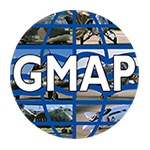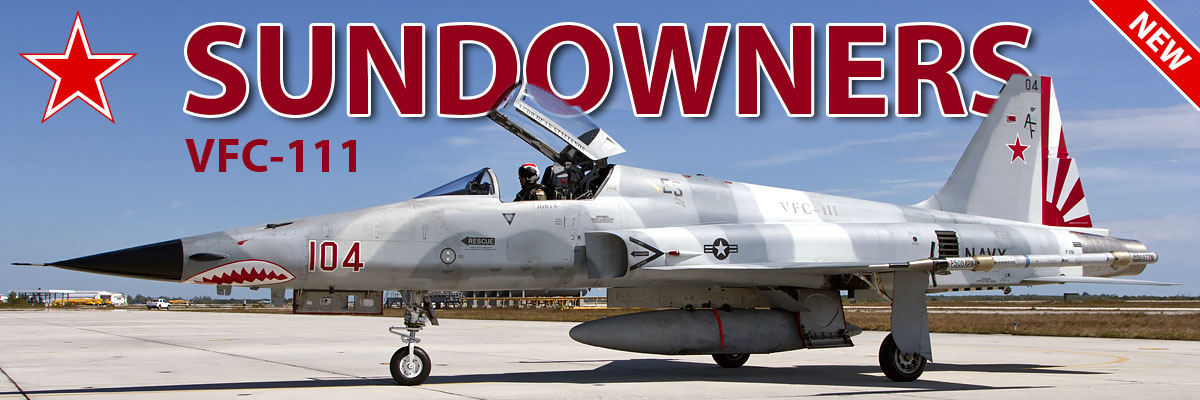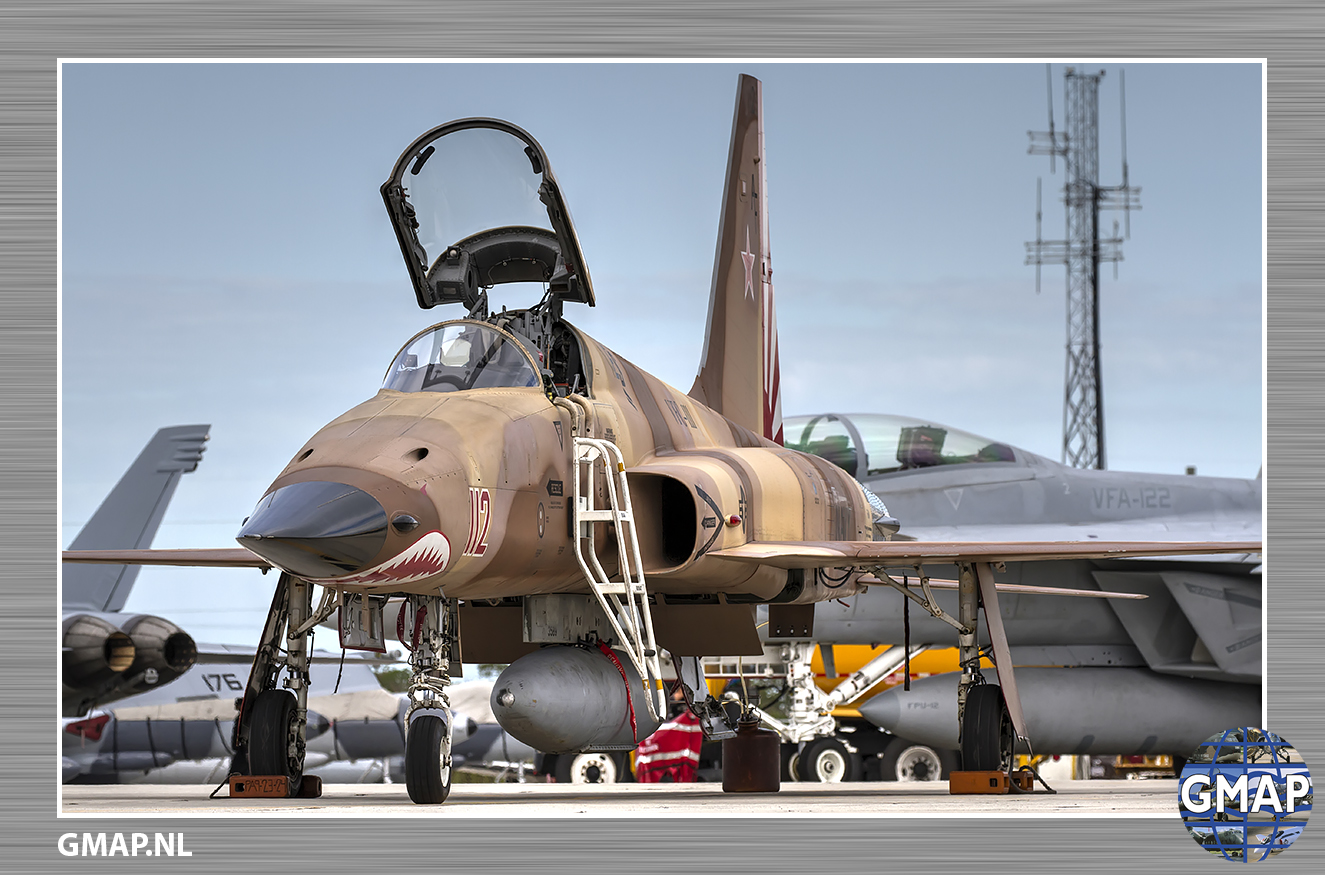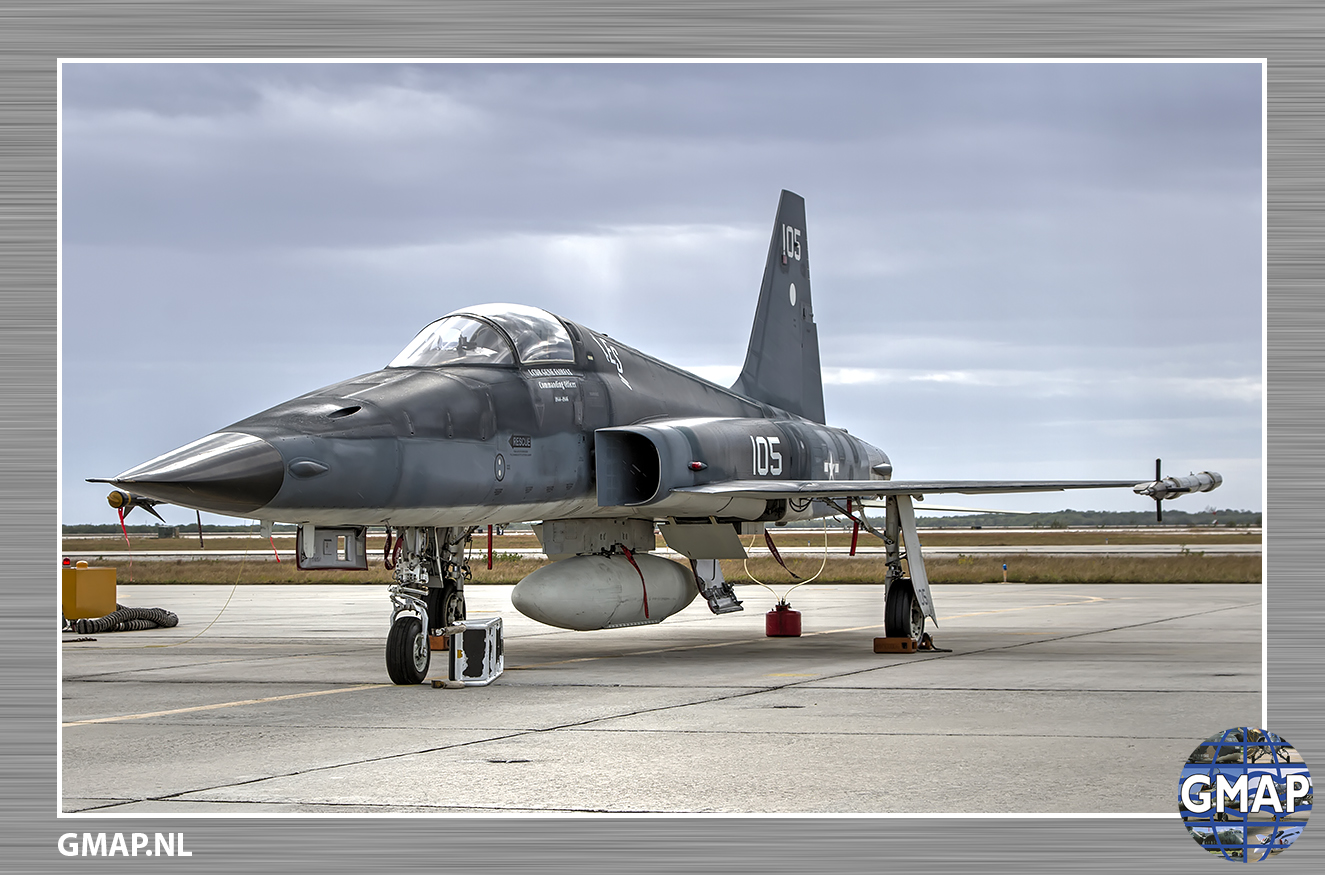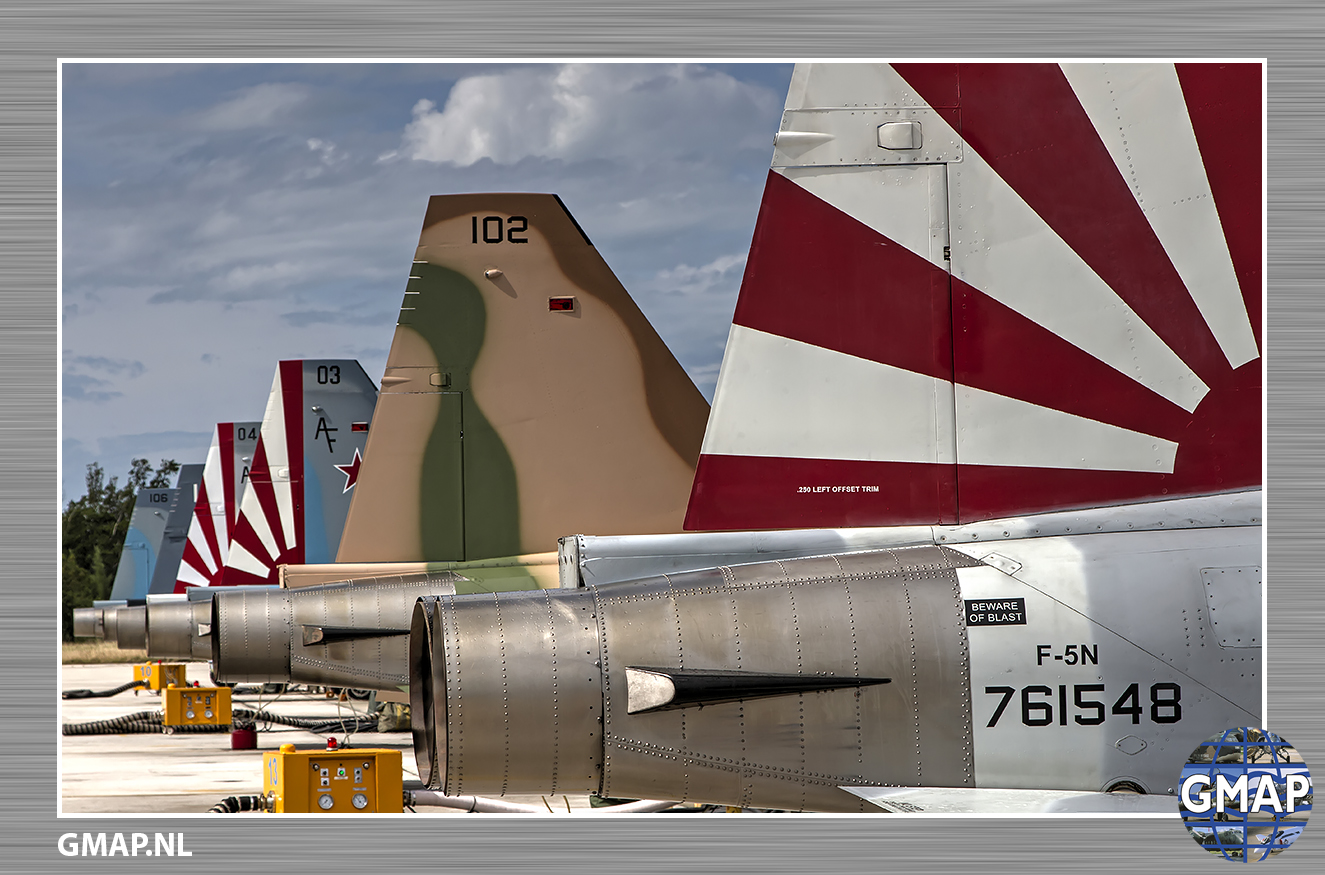SUNDOWNERS OVER KEY WEST
Naval Air Station Key West (also known as Boca Chica Field) is home to Fighter Squadron Composite 111 or VFC-111; nicknamed “The Sundowners”. The airfield is located on Boca Chica Key at the very end of the Florida Keys, approximately 207 kilometers South-West of Miami; Florida. The history of the Naval Base goes back to 1823, but Naval Aviation only commenced in September 1917. By December of that same year, the base was officially commissioned.
NAS Key West is in close proximity of the Key West Complex airspace, a system of Warning- and operating areas used by units conducting training whilst on detachment. The majority of this airspace is covered by the Tactical Aircrew Combat Training System (TACTS) which provides aircrew valuable information for training and performance evaluation in air-to-air combat. With over 250 days of sunshine annually; NAS Key West offers the prefect location for favorable flying conditions almost year round.
ESTABLISHMENT OF VFC-111
 In January 2006, Fighter Composite Squadron 13 or VFC-13 established a permanent detachment at Key West. It was redesignated as VFC-111 on November 1, 2006 and took over the “Sun Downers” identity that belonged to VF-111; a unit that operated the famous Navy F-14 Tomcat from out of NAS Miramar and which was disbanded on March 31, 1995. VFA-111 on its turn had taken over the identity of VF-11; who originally was called “The Sundowners”. It refers to the squadron’s task of shooting down Japanese fighters or “Suns” during the Second World War.
In January 2006, Fighter Composite Squadron 13 or VFC-13 established a permanent detachment at Key West. It was redesignated as VFC-111 on November 1, 2006 and took over the “Sun Downers” identity that belonged to VF-111; a unit that operated the famous Navy F-14 Tomcat from out of NAS Miramar and which was disbanded on March 31, 1995. VFA-111 on its turn had taken over the identity of VF-11; who originally was called “The Sundowners”. It refers to the squadron’s task of shooting down Japanese fighters or “Suns” during the Second World War.
VFC-111 operate as part of the U.S. Navy Reserve’s fleet adversary program, providing dissimilar air combat training (DACT) not only to fleet strike fighter and Marine fighter attack squadrons, but to U.S. Air Force, Air Force Reserve and Air National Guard fighter squadrons as well.
Besides VFC-13 which is flying from out of NAS Fallon (NV); VFC-111 is the only adversary squadron in the US Navy operating the Northrop F-5 Tiger II aircraft. At the same time, the United States Marine Corps also uses the F-5 in an adversary role; operated by VMFAT-401 which has its home base at MCAS Yuma (AZ).
F-5 TIGER II IN SERVICE
During the 1970’s the USN started using a small number of F-5 aircraft for its adversary tasks. When the U.S. Air Force retired its F-5E/F fleet by 1990, various aircraft were reassigned to the adversary squadrons to increase the numbers. With an rapidly ageing fleet and having aircraft nearing the end of its lifespan an alternative had to be found. In 2004 the decision was made to buy 44 F-5 Tiger II’s (39 F-5E -and 5 F-5F models) from Switzerland, who at that time was cutting back on the number of aircraft in service due to budget-constrains. These former Swiss Air Force aircraft, with relatively little hours on the airframe, were delivered to the United States between 2004 and 2007. Upon arriving in the USA, they were overhauled by Northrop Grumman at the company’s facility in St. Augustine (FL). Amongst others, the aircraft were updated with modernized avionics.
Based on the new role of the F-5 as a lead-in trainer aircraft, there was a need for additional two-place training aircraft. Northrop Grumman was offering a conversion kit that modified a single cockpit F-5E aircraft to a dual cockpit F-5F aircraft. This conversion replaced the F-5E forward fuselage with a F-5F forward fuselage, as such becoming an F-5F with relatively low flying hours. A total of three trainers were modified and are referred to as so called “FrankenTigers”. On April 29, 2009 Northrop Grumman acquisition/Re-capitalization Program came to an end with the delivery of the 44th and final airframe.
After completion of the updates the aircraft were designated to F-5N/F and distributed between VFC-111; VFC-13 and VMFAT-401.
Currently VFC-111 is operating 18 F-5s; 17 of these are single-seater F-5Ns and one sole F-5F “FrankenTiger” is being used for making future adversary pilots familiar with the Tiger.
The F-5 has proven to be a solid simulator of third-generation threats such as the Mikoyan MiG-21 and the Chengdu Jian-7. As such it is an ideal candidate for DACT. Due to an overall shortfall compared with the number of sorties needed to meet the training requirements in general (the total capacity is currently estimated to be approximately 45% of the total training demand); it is also used for fourth-generation threats like the MiG-29 and Su-27. However, due to its limit thrust and maneuverability; it is less suitable to act as fourth-generation opponent. The F-5 Tiger II has gone thru an improved handling quality (IHQ) upgrade though; which has enhanced the jet’s ability. Furthermore, the aircraft is very hard to see due to its small size. The Tigers in use with VFC-111 have a wide range of different color schemes which perfectly blend into the surroundings. This helps the fleet pilots to visually get more acquainted with real-life examples of enemy threats, rather than to train with friendly aircraft of same size and color. Add to this the fact that the F-5N/F is an easy to maintain aircraft at relatively low costs; and it becomes clear that VFC-111 is well equipped to fulfill its tasks.
THE ADVERSARY MISSIONS
Before becoming an operational VFC-111 adversary pilot; there are several steps it needs to go thru. Active duty pilots are selected by Navy Personnel Command based upon a preference list they submit; and their end-of-tour fitness report. Reservist (SELRES) apply directly to VFC-111 and are selected based upon the squadron’s decision. Full time support (FTS) are selected based upon a selection board that is administered by Navy Personnel Command.
Although all new pilots have at least completed one fleet tour on base of an aircraft carrier and have flow a minimum of 600 hours on a modern combat aircraft, flying an older third-generation aircraft like the F-5 requires some adaptations. ‘A new pilot at VFC-111 will first need to get familiarized with the F-5. On average, about ten flights with our sole F-5F is sufficient to teach and train the pilot the basics of flying the F-5 aircraft’ says LT Ryan ‘Slo Baby’ Pfeiffer, one of the pilots of VFC-111. ’However, the real challenge only starts here…’.
Next step is to obtain adversary qualifications, which consists of four levels: Level one being solo adversary; level two being a Wingman in dual flight; level three being the lead of a division flight of four aircraft; and finally level four when the pilot has the lead over a major flight consisting of many aircraft.
On average a pilot will fly approximately 200 hours per year or around 170 different sorties. A fulltime contract as adversary pilot typically last for a three years period. Besides the full-time pilots in service with VFC-111, the squadron can also lean on a number of active reservists, who generally stay with the squadron for a longer period of time. On average they usually are on active duty only one week per month.
Within the naval service there are many different training events that require adversaries with different capabilities. As Lt Pfeiffer explains: ‘VFC-111 is well-trained and up to the broad scale of multiple and complex missions its customers are continuously asking for. Missions can range from a single event with one F-5 only to trainings that require multiple adversary aircraft which are used at the same time for practicing different scenarios’.
The vast majority of the professional adversary support VFC-111 provides is directly related to the requirement to generate and maintain the readiness of fleet strike-fighter squadrons. Various trainings are making up the so-called Fleet Response Training Plan (FRTP); an extensive guidance for making naval forces ready for their different roles.
There are two important trainings of the FRTP that are facilitated by VFC-111. The first one is the Fleet Replacement Squadron (FRS) Fighter Weapons and Tactics (FWT) phase. Basically, pilots are being trained on the aircraft they have been assigned to fly; by a unit that is already operating this type of aircraft (the FRS). For example, detachments of both VFA-106 from NAS Oceana and VFA-122 from NAS Lemoore are operating the F/A-18 Super Hornet and are almost permanently based at Key West as FRS. The same goes for Electronic attack Squadron VAQ-129 from NAS Whidbey Island (WA) who has transitioned from the EA-6B to the EA-18G Growler recently. While the practice of bombing targets on the ground is done over the extensive ranches near El Centro (CA); the FWT phase takes place at Key West. It is an individually based; basic strike-fighter training which each pilot must complete before joining an active duty unit.
The second training in which VFC-111 plays an important role is the so-called Strike-fighter Advanced Readiness Program or SFARP. In contrary to the FWT phase; this is a training phase that an entire squadron completes as a team. It usually lasts for about three weeks to a month. During this period, the Strike Fighter pilots are sharpening their fighting skills and tactics against the adversary squadron; in preparation for an upcoming deployment with a Carrier Air Wing (CAW). Different roles and “real-life” scenarios are being practiced; becoming increasingly complex during the course of the period.
FRS and SFARP combined are making-up approximately 37% of the total training demand in which adversary aircraft are brought to the tasks. As such, VFC-111 plays a major contribution in making sure USN aircrews are well trained and up for the job should any worldwide situation require their immediate support
THE KEY WEST RANGE AND EQUIPMENT
All missions are flown over the Key West complex which is located over open-ocean in waters adjacent to the southwestern coast of Florida; between the Florida Keys and Cuba.
Aircraft departing NAS Key West will normally make a sharp turn to the left immediately after take-off. Lt Pfeiffer explains: ‘the airfield is situated in close proximity of housing-areas. With so much flying activities going on almost year-round; we try to reduce the aircraft noise for the citizens as much as possible. By banking away after take-off we avoid flying directly over the residential area’s’.
Within minutes after take-off the aircraft are already in the airspace of the vast Key West complex. Depending on the time of the mission flown, they will proceed to different instrumental ranges; instrumental target areas or non-instrumented warning areas like Warning Area 174 (W-174). This Warning Area is covered by the Tactical Aircrew Combat Training System (TACTS) and is the area where most of the DACT missions are taking place. TACTS provides a capability for real-time tracking of aircraft engaged in air combat. The system has a replay capability and provides valuable information for post-assessment of the mission, including inter-aircraft positon data and weapon launch outcomes.
In 2006, the P5 Combat Training System/Tactical Combat Training System (CTS/TCTS) was taken into use at NAS Key West; being the first Navy installation to work with this sophisticated tool. Today the system allows not only for US Naval Forces to train, but also the US Air Force and allied forces are using the P5, making it a common used platform with maximum flexibility.
The system; developed by Cubic Defense Applications; has proven to be an invaluable asset for VFC-111 and its training-partners. Or as Lt Pfeiffer puts it: ‘The advanced P5 system in combination with the P5 instrumental pod; offers great detailed insights in the performance of the Strike Fighter aircrew. It allows for a steep learning-curve during the period they are here to train with our squadron’. At the same time; it also provides the adversary pilots with valuable information; allowing us to continuously improve tactics and skill’.
The F-5’s at VFC-111 are being equipped with a P5 instrumentation pod before commencing an adversary mission. The pod is mounted to a AIM-9 or AMRAAM launch rail; allowing it to be used by a variety of fixed and rotary wing aircraft. The GPS-based pods provide continuous and precise tracking of equipped participants throughout a training mission and collect a diversity of in-flight data. Amongst others; it includes a real-time kill notification (RTKN) to the aircrews and real-time weapons scoring for long-range weapons.
The P5 pod can support up to 100 aircraft in a single exercise and has a range of 80 nautical miles air-to-air and 125 nautical miles air-to-ground, which can even be extended to over 200 miles with some small modifications. During the mission, the pods mounted to various aircraft communicate with each other and the ground systems, all data being transferred to the ground live monitoring systems. By the time all players have safely returned from their mission to NAS Key West, all mission data will be readily available for the debriefs.
PRESENT AND FUTURE FLEET REQUIEREMENTS
As already mentioned earlier, the fleet demand for adversary training exceeds the current sortie capacity of the Adversary Air Force (ADFOR). With a rapidly ageing fleet of F-5’s; F/A-18’s and F-16’s, the US Department of Defense (DoD) is looking into alternatives for the short- and midterm. One solution is to increase the hours with external companies who provide additional adversary support. Already since quite a number of years, these so-called Contracted Air Services (CAS) have proven to be a success and as such it is growing in popularity. At the moment, there are two major companies offering their adversary support: ATAC being stationed in Newport News (VA) and Draken International who is operating out of Lakeland (FL). Both companies have a wide variety of adversary aircraft on offer; ranging from the Hawker Hunter Mk.58 to the A-4 Skyhawk. Most of the pilots in service with these CAS are former US Navy or Air Force adversary pilots, so very much capable to do the job. Nowadays the aircraft of these two companies are a common sight not only at NAS Key West; but also on any other air base where adversary flights are required (for example: most recently the A-4 Skyhawk’s of Draken Intl. were stationed at Nellis Air Force Base (NV) for a period of two weeks during the Red Flag 2016-2 exercise).
With the F-5 being a low-cost maintenance aircraft, it comes to no surprise that the DoD is also looking into options to expand the F-5 fleet to increase the capacity at the short term and to be able to replace the current F-5’s in service with low-hour examples at a later stage. Lt Pfeiffer says: ‘with the number of sorties we are flying with the F-5’s here at VFC-111; it is estimated that the F-5 will only last until 2020. It would be great if we could extend the fleet with additional fresh aircraft so we can continue to use the F-5 beyond 2020, however future plans are not solid yet’.
It might be very well the case that more F-5’s will enter into service with the US Naval Forces in due time. In the past there have been first talks with the Swiss government to buy another batch of F-5’s; which are becoming redundant due to further downsizing of the Swiss Air Force. At the same time; the Swiss were planning to buy 22 new-build Saab Gripen E fighters as a replacement for the ageing F-5 fleet. However in a public referendum held on May 18 2014, the people voted against the proposal. The procurement of an new fighter for the Swiss Air Force will now only start again next year, which will re-open the doors for negotiations again to buy their remaining F-5’s before 2020. Meanwhile; VFC-111 is up to its task with the current fleet of 18 aircraft.
With a continuously high demand for adversary training events and potentially an additional influx of low hour F-5E’s from Switzerland within the next couple of years; the future of VFC-111 as one of the very few adversary units within the US Forces remains as bright as the sunny skies over NAS Key West.
